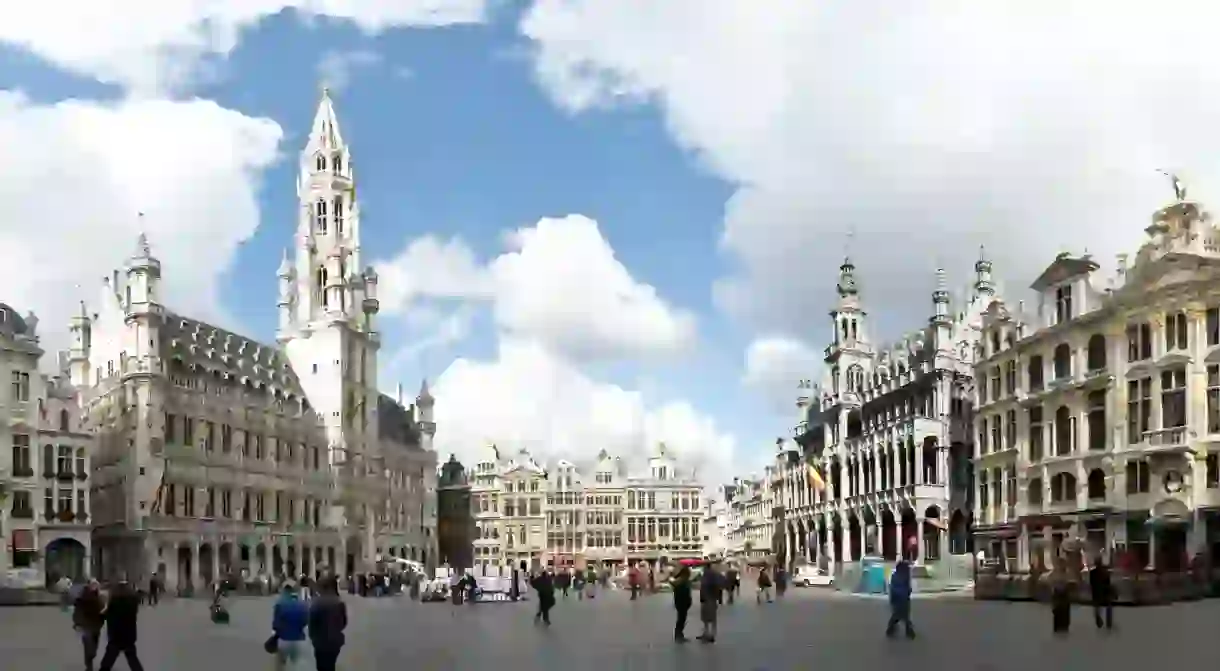The Best UNESCO World Heritage Sites In Brussels

There are buildings and sites that are worth a visit soley based on their historical significance and original beauty. In fact, those that meet a specific list of historical and cultural criteria can earn their status as a World Heritage Site and be protected and conserved by the branch of the United Nations entitled, UNESCO. Belgium has no shortage of buildings that contribute to this list – including many in the capital. Find out which sites have gained the World Heritage Site status, and the ones that are waiting to be approved.
The Grand Place
It’s not hard to see why this town square is a popular attraction for tourists. From the flamboyant guild houses to the tall 15th century Town Hall, the scenery is certainly picture-pretty. The Town Hall is worth a visit due to its historical significance and ornate designs, which include the many statues decorating its walls. From the middle ages to contemporary time, the Town Hall has a tale or two to tell. The Grand Place is also the home of La Maison du Roi or Het Broodhuis – a historical building that is now a popular museum.
This town square qualified as a UNESCO site resulting from the way it effortlessly blends the different architectural and artistic styles that are typical of the region. The Grand Place is also a great example of how an historically merchant city grew into prosperity, while remaining true to its original shape and style. The Grand Place hasn’t changed much since 1695.

Victor Horta’s Town Houses
Every fan of Art Nouveau knows the name Victor Horta. Recognized as one of the most influential architects in the genre, Horta’s houses are a sight to behold. There are four houses in Brussels that are great examples of how the art style can be incorporated into architecture: Hôtel Tassel, Hôtel Solvay, Hôtel van Eetvelde and Maison & Atelier Horta. The latter was his own house, and is now a museum where visitors can take in the elegant details of Art Nouveau and see how Horta was a trailblazer of Art Nouveau as an architectural style. The Town Houses acquired the World Heritage designation thanks to the immaculate manner in which it has been conserved.

Stoclet Palace
After the height of the Art Nouveau period, a new building style entered the world of architecture. The Stoclet Palace is a cavernous private house, commissioned in the 20th century by banker Adolphe Stoclet. The architect, Josef Hoffmann, was given an artistic and financial carte blanche by the owner. The result is a building that marks the ending of Art Nouveau and the beginning of the more sober Art Deco. Many artists helped realize this project, including Gustav Klimt, Koloman Moser, Frantz Metzner, Richard Luksch, and Michael Powolny.
Despite not being a public building, the Stoclet Palace has made it to the World Heritage list because it’s a well conserved example of Western aesthetics at the beginning of the 20th century.

Galeries Royales Saint-Hubert
The perfect place to go window-shopping while enjoying architectural ingenuity. The Galeries Royales Saint-Hubert is a 19th century indoor shopping district representing an ornate Italian style of architecture and design. The gallery itself is made up of three different parts – the King’s Gallery, Queen’s Gallery, and the Gallery of the Princess. Located in the heart of Brussels near the Rue de Bouchers, the Central Station and the Grand Place, it remains a frequently visited destination. The gallery is not officially a World Heritage site, but it is waiting to be added to the list, which could take five to ten years.

Palace of Justice
Not a palace for royals, but one for judges and lawyers. The Palace of Justice is the most important court building in Belgium. The architect was Joseph Poelaert, who also restored the Théatre Royal de la Monnaie and built the Church of Sainte-Cathérine and the Church of Our Lady of Laeken. Commissioned by the Belgian government, it was a costly endeavor, and resulted in part of the Marolles neighborhood being demolished to make room for the building.
Located on the macabre Galgenberg (‘gallows mountain’) hill, the neoclassical and eclectic building is an architectural beauty. Currently undergoing extensive restorations, it too is currently on the Tentative List – a mandatory step before it can attain the official World Heritage designation.














